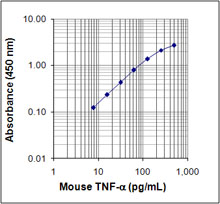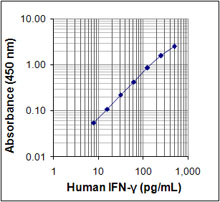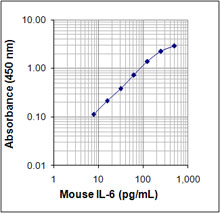- Regulatory Status
- RUO
- Other Names
- TMB Substrate
- Ave. Rating
- Submit a Review
- Product Citations
- 75 publications
| Cat # | Size | Price | Quantity Check Availability | Save | ||
|---|---|---|---|---|---|---|
| 421101 | 110 mL | 34€ | ||||
The TMB Substrate Set contains 110 ml TMB Substrate A and 110 ml TMB Substrate B, sufficient for twenty 96-well plates. It is formulated with 3, 3', 5, 5' tetramethyl benzidine (TMB). The substrate can be catalyzed with peroxidase to produce a pale blue color which can be read spectrophotometrically at 370 or 620-650 nm. The TMB reaction may be stopped with BioLegend's Stop Solution (Cat. No. 423001), and read at 450 nm.
Product DetailsKit Contents
- Kit Contents
-
- 1 vial containing 110 mL of TMB Substrate A
- 1 vial containing 110 mL of TMB Substrate B
Product Details
- Storage & Handling
- The TMB Substrate Set (TMB Substrate A and TMB Substrate B) should be stored between 2°C and 8°C. Avoid prolonged exposure to light, contact with metal, air, or extreme temperatures.
- Application
-
ELISA
- Recommended Usage
-
TMB Substrate A should be clear and colorless.
TMB Substrate B should be colorless to a very light amber.
TMB Substrate is the mixture of equal volumes of TMB Substrate A with TMB Substrate B. For example, for one plate, mix 5.5 ml TMB Substrate A with 5.5 ml of TMB Substrate B in a clean container. Mix immediately before use.
After mixing the reagents together, TMB substrate working solution should be colorless or very faint blue. - Application Notes
-
Warm to room temperature prior to use. To prepare a working solution, mix equal volumes of TMB Substrate A and TMB Substrate B. Prepare only the amount needed for each assay run. After wells are completely washed, to remove unbound antibody and HRP, add 100 µl to 200 µl substrate solution to each well. Discard any remaining working solution after use. For endpoint assays, add 50 µl to 100 µl of Stop Solution (2N H2SO4 or 1M H3PO4), which changes the color from blue to yellow. Read at 450 nm (minus 570 nm for wavelength correction) within 30 minutes of stopping the reaction. For kinetic assays, read the blue color at 620 - 650 nm.
- Application References
- Product Citations
-
- RRID
-
SCR_001134 (BioLegend Cat. No. 421101)
Antigen Details
- Gene ID
- NA
Related Pages & Pathways
Pages
Related FAQs
- What is the difference between your two substrate solutions: TMB Substrate Reagent Set (Cat. No. 421101) and TMB High Sensitivity Substrate Solution (Cat. No. 421501)?
-
TMB Substrate Reagent Set (Cat. No. 421101) contains two components, which need to be mixed immediately prior to use. The TMB High Sensitivity Substrate Solution (Cat. No. 421501) contains everything in one solution with special stabilizers. It is a high kinetic substrate solution which generally gives higher signal. The type of substrate used for an assay can affect the optical density (OD) achievable and the time required to achieve the desired OD.

 Login / Register
Login / Register 
















Follow Us